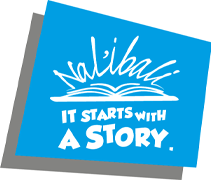Athol Williams
November is Picture Book Month and the power of picture books is evident in the numerous engagement options they offer a child. These multiple options offer a broadened approach to reading. I count five different ways in which picture books can be used by children, in effect, making a picture book, five books in one. The first three ways relate to children reading on their own, while the last two relate to children interacting with others.
Firstly, children can ‘picture read’ where they focus only on the pictures in a book. This is a powerful way for a child to ignite their imagination. For children too young to read or those learning to read, going through the pictures allows them to develop their own story or piece together their best guess at the story of the book, even imagining the dialogue. The developmental benefits of exercising their imagination in this way are significant, as children develop into active readers and thinkers. Picture-reading develops within children the ability to formulate their own stories, and the ability to structure and organise their thinking and communication.
The pictures can be valuable to children struggling to read, children with learning difficulties or children learning to read in a new language. The pictures help them grow in confidence since they can still develop an appreciation of the story, which in turn promotes inclusivity in the classroom as these children can engage in the activity of reading even if they are struggling with the text.
A second way that picture books can be used, is for a child to read the text only, with little focus on the pictures. These might be children who don’t feel the need for pictures or older children, although few children can resist indulging in bright colourful illustrations, even if only for a few seconds!
Thirdly, a child could combine the reading of the text with the pictures. Often a child is first attracted to the illustrations on the page. In this way, the pictures either augment the text or the text is seen to augment the pictures. The combination of pictures and text helps accelerate reading ability and comprehension because it enables the child to associate the visuals of the pictures, with the words and sounds of the text. Again, for children with reading difficulties or those reading in a new language, having pictures connected to the text serves as a learning aid, and in many cases the pictures can fill the gaps in the child’s reading of the text.
The fourth way in which a picture book can come to life is when the book is read aloud to a child. With a child sitting on a parent’s lap, a young child can follow the pictures while the parent reads. This way the young child actively participates in the telling of the story. Having the pictures offers the parent the opportunity to interact and bond with the child about what they see, and how they connect what has been read with the pictures. This interaction serves not only to help the child read but serves as a way to strengthen the parent-child relationship.
Pictures books are valuable in the classroom where the teacher can read aloud while showing the illustrations to the children, bringing the text alive for them through the pictures. Children often observe fine detail in pictures which help connect them to the story, and often they will conjure up stories from the pictures that are not present in the text, thus adding greater richness to the reading experience for both child and parent or teacher.
A fifth use of picture books is through shared reading among children. Sharing the same book among a few children who cannot yet read, allows them to create their own stories and to learn from each other in so doing. Often children build on each other’s stories, sparking new ideas and imaginary creations, and enhancing their vocabulary.
Given the powerful role that pictures play it is important that books contain illustrations that appeal to children. Depending on the story, pictures can be realistic or not but preferably brightly colourful with hidden gems and even elements that go beyond the text of the book.
Over time children can experience picture books in all five ways. With this versatility of picture books parents and teachers can start reading to children at an early age. The five ways give picture books longevity as you can keep coming back to them as the child’s reading ability develops.
Athol Williams is the chairman of Read to Rise and the author of the Oaky series of children’s books. He is a Senior Lecturer at UCT.
